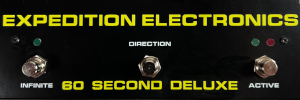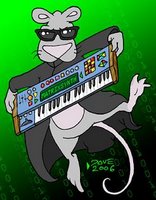
Showing posts sorted by date for query "east germany". Sort by relevance Show all posts
Showing posts sorted by date for query "east germany". Sort by relevance Show all posts
Sunday, September 01, 2024
AMS 3 - Socialist East Germany's Massive Modular
video upload by HAINBACH
"Synthesizers had it hard in Socialist East-Germany - Socialist Realism was for a long time the prevailing art form. An instrument that creates unreal sounds was not endorsed by the SED leadership. Only in the waning years of the GDR (or DDR as it is called in German) that changed, with the Vermona Synthesizer coming out in 1982. The first officially sanctioned modular synthesizer, the Audiotronic AMS3 featured in this video was built between 1986 and 1988 for the Electro-Acoustic Studio of the Akademie der Künste.
Music, Soundpack and thanks: / hainbach"
You can find the Subharchord here: An Avant-Garde Synthesizer From 1960s East Germany
Wednesday, August 21, 2024
Top4 Songs Made in GDR ~ Karat Silly Lift ~ Vintage Synthesizer Recreation ~ RetroSound
video upload by RetroSound
"(c)2007-24 by RetroSound
supported by UVI: http://bit.ly/retrosound-uvi
❤️ Support #RetroSound channel: https://retrosound.creator-spring.com
Four of my favorite tracks 'Made in GDR', music from east germany
0:07 Karat - Der Blaue Planet (1982)
1:10 Silly - Mont Klamott (1983)
2:29 Lift - Nach Süden (1979)
3:05 Silly - Bataillon D`Amour (1986)
Featured the Moog Minimoog, Logan String Melody 2, Yamaha DX7 II
This cover song series contains my own recreations of my favourite songs from the last 50 years. The original music from which I take inspiration belong to their respective owners. I recreate tracks only for personal passion and to pay homage to these tracks.
My intention is not to create covers that sound exactly like the original (if you want to hear identical sounds, please listen the original). It's more of an inspiration with my sounds from the old synthesizers from the past and of course the great appreciation for the original performers and producers."
Tuesday, April 23, 2024
Vermona Digital Rhythm Machine
Note: Auction links are affiliate links for which the site may be compensated.
video upload by ohm_studi_ohm
"First i demo a few patterns I programmed along some of the functionalities like "flam" (which affects either toms or snares depending on the state of the dedicated switch), "solo", "fill", "bass only", "second rhythm". Then I program a pattern on the fly to show how straightforward it is to do (either in "TR" recording or in realtime). After that I demo the presets of the unit and finally I hooked the Vermona to a Roland TR8S to use the latter as a MIDI pad and sequencer to play the DRM's sound."
via this listing
"Analog drum machine from East Germany, often tagged as the "east block TR-808". I think it deserves better than this comparision, since it's a very nice sounding drum machine on its own, with many features for the time (MIDI, optional trigger input and individual outputs etc)
Unit was serviced, calibrated and is in fully working order. You could argue some switches sometimes mis trigger or double trigger but nothing major, and quite normal for a 40 years old technology.
Cosmetic is in very good condition with some wear of course."
video upload by ohm_studi_ohm
"First i demo a few patterns I programmed along some of the functionalities like "flam" (which affects either toms or snares depending on the state of the dedicated switch), "solo", "fill", "bass only", "second rhythm". Then I program a pattern on the fly to show how straightforward it is to do (either in "TR" recording or in realtime). After that I demo the presets of the unit and finally I hooked the Vermona to a Roland TR8S to use the latter as a MIDI pad and sequencer to play the DRM's sound."
via this listing
"Analog drum machine from East Germany, often tagged as the "east block TR-808". I think it deserves better than this comparision, since it's a very nice sounding drum machine on its own, with many features for the time (MIDI, optional trigger input and individual outputs etc)
Unit was serviced, calibrated and is in fully working order. You could argue some switches sometimes mis trigger or double trigger but nothing major, and quite normal for a 40 years old technology.
Cosmetic is in very good condition with some wear of course."
Monday, March 04, 2024
Rare Tiracon 6V Polysynth | Basic tune and a look inside
video upload by Mindburner
"This video fatures the Tiracon 6V polysynth for around 1987. It was made in Communist East Germany. It is one of the last and very rare analogue synthesizer models produced in German Democratic Republic before German reunion."
Monday, September 11, 2023
An Avant-Garde Synthesizer From 1960s East Germany
video upload by HAINBACH
"The Subharchord is a very rare electronic instrument from East Germany, made in the early sixties. At that time, the international music world was excited by the new electronic music coming from places like the WDR Studio in Cologne. As the GDR sought to lead over the West in all aspects, they established the „Labor für Akustisch-Musikalische Grenzprobleme“ (English: Laboratory for Problems at the Acoustics/Music Interface) to develop advanced electronic sound production. There the Subharchord was created by Ernst Schreiber as the lead engineer, while the striking look was designed by Gunter Wächtler. From the beginning it faced ideological concerns, which should later spell its doom. Thanks to the Elektro-Akustische Studio at ADK Berlin I got to explore it."
Saturday, June 24, 2023
VEB Automatisierungsanlagen Cottbus Tiracon 6V [GDR, 1987]
Note: Auction links are affiliate links for which the site may be compensated.
via this auction
Pics of the inside below.
"Made in 1987 in Cottbus, former East Germany. Most likely based on Korg Poly-61 with some extras. Equipped with a fully functional MIDI system (in/out/thru(!)), a simple sequencer, chord memory, patch transfer function via tape interface and a rather unuseful Autotune function, which just freezes the synth (nothing bad happens, just turn it off and on).
Typical analog-poly sound combined with total rawness and uniqueness. Surprisingly quiet, less noisy than most of my gear. Keeps in tune, although hadn't been tuned by me and in years and years generally, so there might be a tiny repetitive difference between tones. But that definitely gives it some character anyway."
via this auction
Pics of the inside below.
"Made in 1987 in Cottbus, former East Germany. Most likely based on Korg Poly-61 with some extras. Equipped with a fully functional MIDI system (in/out/thru(!)), a simple sequencer, chord memory, patch transfer function via tape interface and a rather unuseful Autotune function, which just freezes the synth (nothing bad happens, just turn it off and on).
Typical analog-poly sound combined with total rawness and uniqueness. Surprisingly quiet, less noisy than most of my gear. Keeps in tune, although hadn't been tuned by me and in years and years generally, so there might be a tiny repetitive difference between tones. But that definitely gives it some character anyway."
Saturday, February 19, 2022
Vermona E-Piano Vintage Analog DDR Electronic Piano
Note: Auction links are affiliate links for which the site may be compensated.
via this auction
 "Electric piano made in East Germany in the late 70s. It's the brother of the Vermona Piano Strings.
They share the same body and layout but sound is a bit different. The piano sounds fuller on this one. Harpsichord and Spinet sounds are quite similar.
This one has a very nice and deep tremolo buit in, but no triple chorus like its string machine sibling.
Also has the same overall and seperate instruments volume control as well as a sustain switch that either make the sound to its longuest sustain or have the pedal control it.
A previous owner added a pot (in a not very nice place on the keyboard) that controls the length of the sustain. It's a nice added feature.
The unit was serviced. Caps in the power supply were replaced and original DIN sockets were replaced by jack ones for both output and sustain pedal input.
It's perfectly working.
Condition is fair, there are signs of wear and time but overall still looks good."
"Electric piano made in East Germany in the late 70s. It's the brother of the Vermona Piano Strings.
They share the same body and layout but sound is a bit different. The piano sounds fuller on this one. Harpsichord and Spinet sounds are quite similar.
This one has a very nice and deep tremolo buit in, but no triple chorus like its string machine sibling.
Also has the same overall and seperate instruments volume control as well as a sustain switch that either make the sound to its longuest sustain or have the pedal control it.
A previous owner added a pot (in a not very nice place on the keyboard) that controls the length of the sustain. It's a nice added feature.
The unit was serviced. Caps in the power supply were replaced and original DIN sockets were replaced by jack ones for both output and sustain pedal input.
It's perfectly working.
Condition is fair, there are signs of wear and time but overall still looks good."
via this auction
 "Electric piano made in East Germany in the late 70s. It's the brother of the Vermona Piano Strings.
They share the same body and layout but sound is a bit different. The piano sounds fuller on this one. Harpsichord and Spinet sounds are quite similar.
This one has a very nice and deep tremolo buit in, but no triple chorus like its string machine sibling.
Also has the same overall and seperate instruments volume control as well as a sustain switch that either make the sound to its longuest sustain or have the pedal control it.
A previous owner added a pot (in a not very nice place on the keyboard) that controls the length of the sustain. It's a nice added feature.
The unit was serviced. Caps in the power supply were replaced and original DIN sockets were replaced by jack ones for both output and sustain pedal input.
It's perfectly working.
Condition is fair, there are signs of wear and time but overall still looks good."
"Electric piano made in East Germany in the late 70s. It's the brother of the Vermona Piano Strings.
They share the same body and layout but sound is a bit different. The piano sounds fuller on this one. Harpsichord and Spinet sounds are quite similar.
This one has a very nice and deep tremolo buit in, but no triple chorus like its string machine sibling.
Also has the same overall and seperate instruments volume control as well as a sustain switch that either make the sound to its longuest sustain or have the pedal control it.
A previous owner added a pot (in a not very nice place on the keyboard) that controls the length of the sustain. It's a nice added feature.
The unit was serviced. Caps in the power supply were replaced and original DIN sockets were replaced by jack ones for both output and sustain pedal input.
It's perfectly working.
Condition is fair, there are signs of wear and time but overall still looks good."
Sunday, September 12, 2021
Vermona Sandy electronic organ
Monday, July 05, 2021
Vermona Formation 1 - Vintage Rare Analog Organ
Note: Auction links are affiliate links for which the site may be compensated.
video upload by Jaroslav Čížek
"Hammond organ of the East"
via this auction
 "Vermona Formation 1 is a rare vintage analogue organ with built-in spring reverb.
"Vermona Formation 1 is a rare vintage analogue organ with built-in spring reverb.
Made in 1984s in Germany (GDR).
The price includes an the instrument, original suitcase, original stand, and an original manual.
My particular unit is in a truly mint condition, honestly the instrument looks stunning, as you can you on the photos. It is also in full working order - I personally did the maintenance check recently.
• All the buttons, faders, keys are working perfectly
• Spring reverb works and sounds beautiful
• All te functions are in 100% working order.
• The chassis is clean and not broken.
• Output signal is loud and clear. It is not distorted, noisy nor crackly.
Despite the fact that this is an almost 40 years old instrument it shows close to none traces of usage. The suitcase, stand, and manual all have some traces of usage, most of them perfectly visible on the pictures, but still it they are in really nice condition and work perfectly well."
video upload by Jaroslav Čížek
"Hammond organ of the East"
via this auction
 "Vermona Formation 1 is a rare vintage analogue organ with built-in spring reverb.
"Vermona Formation 1 is a rare vintage analogue organ with built-in spring reverb.Made in 1984s in Germany (GDR).
The price includes an the instrument, original suitcase, original stand, and an original manual.
My particular unit is in a truly mint condition, honestly the instrument looks stunning, as you can you on the photos. It is also in full working order - I personally did the maintenance check recently.
• All the buttons, faders, keys are working perfectly
• Spring reverb works and sounds beautiful
• All te functions are in 100% working order.
• The chassis is clean and not broken.
• Output signal is loud and clear. It is not distorted, noisy nor crackly.
Despite the fact that this is an almost 40 years old instrument it shows close to none traces of usage. The suitcase, stand, and manual all have some traces of usage, most of them perfectly visible on the pictures, but still it they are in really nice condition and work perfectly well."
Monday, June 28, 2021
MFB's Manfred Fricke Has Passed Away
Left: Manfred Fricke (via Amazona.de) back in the day with his first creations, the MFB-501 drum machine (right), and MFB-601 digital sequencer (left).
2nd image is Manfred Fricke with the MFB SYNTH II at SUPERBOOTH (unknown source).
We lost another legend in the synth world. Sad news in via STROMKULT: "'On June, 17th around 11am Manfred Fricke from Berlin alias MFB sadly passed away after having had a hard time with cancer for a while already. He left his wife Gloria and his son Jean-Marcel behind, we are all very sad having lost this partner, friend and father.'
HerrSchneider


Manfred Fricke was one of Berlins pioneers of analog synth and drum machine makers. He has been the weapon of choice for many (not only) starting musicians. Let’s be honest, who didn’t have one of his creations early in his or hers journey into electronic musical instruments – or at least thought about getting one – and why shouldn’t you? Manfred Fricke's machines always brought something unique to the table, they were mostly analog, affordable, in small plastic housings and just did the job. Manfred always focused on keeping his products affordable for his clients and the instruments quite often made their way to professional use later on, and the musicians often kept their first units as something almost holy, because it were these machines that paved the way into analog electronic music making.
But it would be too short-sighted to associate MFB only with budget entry-level products. Especially the drum machines Tanzbär and Tanzbär II, or the great Dominion 1 show that Manfred Fricke also built machines that met higher demands. The Tanzbär, in particular, is considered by many to be their favorite drum machine of the last few years, especially in terms of its amazing sound.
We hope that MFB will continue to exist and that it will continue to make it easier for many generations of musicians to enter the world of electronic sound production.
We wish Manfred Fricke's son Jean-Marcel continued success for the future of MFB and extend our condolences to him and his family. And lets hope that Manfred will finally meet up with all the other good guys on the other side.
Rest In Peace."
MFB TANZBAR 2 pic via STROMKULT.
video upload by 7V-STUDIO
MFB's Manfred Fricke's first procuct, the Fricke MFB-501 drum machine.
Description via this video:
"This little analog beatbox was developed in
(retail price for the switch at 16 DM). An external wall power supply provides 12 volts.
Approx. 5000 units of the MFB-501 had been sold. Not so bad for a one-man company. So this drum machine is one of the top-selling devices in the history of the Berlin engineer offices M. Fricke . If you're lucky, this iconic device can still be found on the relevant internet sales platforms.
Today, maintenance of this tiny noise machine is still easily feasible, because Fricke employed only commercially available components. Therefore, 'presumedly dead 501's' can be reanimated without major problems."
MFB 601 Vintage Digital Sequencer, Teardown, Repair and partial analysis
Published on Feb 2, 2015 FPV Electronics
Note this video is FPV Electronics of course, and not Manfred Fricke.
"This device is exclusively built from 7400 and 4000 series basic logic ICs. Making it must have been so much more difficult than just programming a generic µController as we would do today."
Timeline via http://mfberlin.de/en/about-us/:
1976: MFB was founded by engineer Manfred Fricke. So far there were more than some hundred products constructed and distributed. The first developments and products were primarly video games for industrial playmachines.
1979: A lowcost drummachine was introduced in 1979. (98 DM for the self construction kit). The legendary drumcomputer MFB-501 was finished and sold. Although it was not the most prominent drumcomputer of that time it surely was one of the best selling drum units in Germany. Some shops sold ten times more MFB-501s than Roland TR-808s. More products for the musician followed, such as the Digital-Sequencer MFB-601 and the digital drum machine MFB-512. All of these featured rich products were offered at exceptional low prices.
1984: The E-Drum module series 1000 and 2000 followed with corresponding pads.
1986: A new construction period started in 1986 with product launches of the MIDI-CV converter MFB-201 and the MIDI drummer MFB-SYNTH was finished in 1997, although its development dates back to the eighties. The machine never went into production since 2001, the year of the company´s 25th anniversary because of decreased interest in analogue synthesizer technology especially in the sales channels.
From 1986 Manfred Fricke specialized in products for video applications. Alone 20 different framegrabbers for the Apple II, C-64 und IBM compatible PCs were constructed. A very high percentage of these framegrabbers were and are still in use for special industrial purposes. Custom development is still done here, so these specialized tools are not available for other customers.
1994: MFB introduced the world´s first videomixer below 1.000 DM, the MFB-901. Its successor MFB-902 was available in 1995. Another important development in the video section was the model MFB-912, a digital video memory. This 1998 product was highly acclaimed by the press.
1999: The successor MFB-915 added sound and higher picture resolution. It´s available since October 1999. Another successor is the model MFB-920 with an integrated harddrive offering better options for nonlinear cutting and post processing of the recorded material.
2001: During this year, Manfred Fricke also developed another new MIDI drum-module. MFB-KULT, includes most of the famous sounds of the older machines. Both MFB-SYNTH and MFB-KULT are availabale since December 2001. Because of constant requests for the digital sequencer MFB-601 a successor MFB-602. was introduced in May 2002.
2002: Since August 2002 there´s also a little brother of the MFB-SYNTH, the MFB-SYNTH LITE
And of course the MFB DOMINION series and the MFB SYNTH PRO.
There have been 1747 MFB posts on the site prior to this one. MFB has been a mainstay on the site and Manfred Fricke will be greatly missed.
Sunday, February 21, 2021
Tiracon 6V + Vermona Synthesizer + Vermona SK 86
video by Najvrtson
"Three wonders from East Germany, three keyboard instruments unique in their era: The only monophonic synthesizer, the only polyphonic synthesizer and the only arranger keyboard made in GDR together in one a little bit strange composition! This composition has been already used in my older video, but then I played it on Electronica EM-25, Delicia HT-61-BD and Vermona SK-86 (you can watch and listen here:)"
1984 Microcar Bonny Drive and Description
video by Najvrtson
"Here you can see my Microcar Bonny (by Jeanneau, France, 1984) in detail. Enjoy!"
Friday, February 19, 2021
VERMONA Analog Synthesizer - Made in GDR (1982) - Ten sounds from east germany
video by RetroSound
"(c)2007-21 by RetroSound
supported by UVI: http://bit.ly/retrosound-uvi
From my video archive. I have made this video in 2011 so is the video quality not the best. Sorry.
VERMONA Analog Synthesizer from the year 1982
Made by VEB Klingenthaler Harmonikawerke, east germany
2-VCO monophonic analog synthesizer with a 24dB VCF, two ADSR envelopes with envelope presets, LFO, glide and more.
500 synths produced. Many of them were exported to the Soviet Union.
Also called as Zonen-Moog ;)
RetroSound synthesizer demo videos since january 2007.
All is for free. If you like my work, so can you support me with a donation or a purchase of my synth shirts or music albums. Thank you!
RetroSound Home: https://retrosound72.wixsite.com/home"
Sunday, January 17, 2021
Weltmeister Basset
Note: Auction links are affiliate links for which the site may be compensated.
via this auction
Some pics of the inside below.
"The Weltmeister Basset , sometimes referred to as the Weltmeister Combo Bass, was the first keytar! This rare "Cold War" electro-mechanical keyboard instrument was made from 1963 to 1969 by accordion manufacturer, Weltmeister, in East Germany. It was practically impossible to get one in the US.
The battery-powered Basset was popular in the 1960s and early 1970s with East German dance bands. Its mechanical piano action was derived from its big brother, the Weltmeister Claviset. Pressing a key causes the lip of a rubber disc to pluck the tine. When the key is released, the sound is stopped by a foam damper. A warning label in German, Cyrillic Russian, and English warns of "danger of life" if you connect it to a radio or an amplifier with AC-DC!"
via this auction
Some pics of the inside below.
"The Weltmeister Basset , sometimes referred to as the Weltmeister Combo Bass, was the first keytar! This rare "Cold War" electro-mechanical keyboard instrument was made from 1963 to 1969 by accordion manufacturer, Weltmeister, in East Germany. It was practically impossible to get one in the US.
The battery-powered Basset was popular in the 1960s and early 1970s with East German dance bands. Its mechanical piano action was derived from its big brother, the Weltmeister Claviset. Pressing a key causes the lip of a rubber disc to pluck the tine. When the key is released, the sound is stopped by a foam damper. A warning label in German, Cyrillic Russian, and English warns of "danger of life" if you connect it to a radio or an amplifier with AC-DC!"
Thursday, December 24, 2020
VAI 38 - Two Farfisa Syntorchestras
Vintage Audio Institute Italia
"While we had two of the Farfisa Syntorchestras in the studio we thought it would make sense to make track using both of them.
We're using the transcribe/pitch knob to create the monphonic lead melody harmonies, a surprisingly effective little trick for us amateur players to come off as skilled :).
The Vermona ER9 is an East Germany-made drum machine with individual volumes for each sound.
Here we ran it through a phaser and spring reverb.
We make these videos as a showcase for our studio, for other curious vintage heads - and for fun.
We don't dilly-dally too much with production and mixing but it can sound pretty good with headphones on."
Monday, May 18, 2020
Vermona ET 6-1 Rare 70s Analog Combo Electric Organ
Note: Auction links are affiliate links for which the site may be compensated.
via this auction
 "Made in East Germany in the early 70s! A lovely organ with some classic sounds that you may be looking for. Its transistor organ, halfway between the continental Vox and the Farfisa Compact. A look "Eastern Europe" dressed in faux wood plastic, a very typical rock garage sound and a beautiful integrated reverb. A small feature that I really like the "repeat" function that allows you to play the notes in eighth notes.
"Made in East Germany in the early 70s! A lovely organ with some classic sounds that you may be looking for. Its transistor organ, halfway between the continental Vox and the Farfisa Compact. A look "Eastern Europe" dressed in faux wood plastic, a very typical rock garage sound and a beautiful integrated reverb. A small feature that I really like the "repeat" function that allows you to play the notes in eighth notes.
Unfortunately for spares and repairs. Wont power up and needs service repair. All buttons, keys, sliders switches are in place."
via this auction
 "Made in East Germany in the early 70s! A lovely organ with some classic sounds that you may be looking for. Its transistor organ, halfway between the continental Vox and the Farfisa Compact. A look "Eastern Europe" dressed in faux wood plastic, a very typical rock garage sound and a beautiful integrated reverb. A small feature that I really like the "repeat" function that allows you to play the notes in eighth notes.
"Made in East Germany in the early 70s! A lovely organ with some classic sounds that you may be looking for. Its transistor organ, halfway between the continental Vox and the Farfisa Compact. A look "Eastern Europe" dressed in faux wood plastic, a very typical rock garage sound and a beautiful integrated reverb. A small feature that I really like the "repeat" function that allows you to play the notes in eighth notes.Unfortunately for spares and repairs. Wont power up and needs service repair. All buttons, keys, sliders switches are in place."
Tuesday, February 04, 2020
Cottbus/ Vermona Tiracon 6V GDR Synthesizer
Note: Auction links are affiliate links for which the site may be compensated.
via this auction
"East Germany, 6 voice analog synth, one VCO per voice, 3 LFO, 2 EG, 24dB LPF with resonance, 12dB HPF with resonance.
Working, but 2nd and 6th voices has a noise."
You can find demos of one in previous posts here.
via this auction
"East Germany, 6 voice analog synth, one VCO per voice, 3 LFO, 2 EG, 24dB LPF with resonance, 12dB HPF with resonance.
Working, but 2nd and 6th voices has a noise."
You can find demos of one in previous posts here.
Wednesday, November 06, 2019
POLIVOKS VINTAGE DUOPHONIC USSR SOVIET ANALOG LEGENDARY SYNTHESIZER
Note: Auction links are affiliate links for which the site may be compensated.
via this auction
 "The Polivoks (also occasionally referred to as the Polyvox; Russian: Поливокс) is a duophonic, analog synthesizer manufactured and marketed in the Soviet Union between 1982 and 1990. It is arguably the most popular and well-known Soviet synthesizer in the West, likely due to the uniqueness of both its appearance and sound.
"The Polivoks (also occasionally referred to as the Polyvox; Russian: Поливокс) is a duophonic, analog synthesizer manufactured and marketed in the Soviet Union between 1982 and 1990. It is arguably the most popular and well-known Soviet synthesizer in the West, likely due to the uniqueness of both its appearance and sound.
The Polivoks was designed at the Urals Vector plant, but actual production was handled at the Formanta Radio Factory in Kachkanar, Russian SFSR. It was intended to appear and sound similar to American and Japanese synthesizers from companies such as Roland, Moog, and Korg. The Polivoks was engineered by circuit designer Vladimir Kuzmin with the appearance of the instrument influenced by his wife Olimpiada,[2] who took inspiration from the design of Soviet military radios. Its retail price upon release was 920 rubles and over its lifetime around 100,000 Polivoks were manufactured - sometimes with a production rate of up to 1,000 units a month. But accordingly to information shared by Vladimir Kuzmin only 200-300 Polvokses were produced per month. It means that total number cannot be more than 32000.
via this auction
 "The Polivoks (also occasionally referred to as the Polyvox; Russian: Поливокс) is a duophonic, analog synthesizer manufactured and marketed in the Soviet Union between 1982 and 1990. It is arguably the most popular and well-known Soviet synthesizer in the West, likely due to the uniqueness of both its appearance and sound.
"The Polivoks (also occasionally referred to as the Polyvox; Russian: Поливокс) is a duophonic, analog synthesizer manufactured and marketed in the Soviet Union between 1982 and 1990. It is arguably the most popular and well-known Soviet synthesizer in the West, likely due to the uniqueness of both its appearance and sound.The Polivoks was designed at the Urals Vector plant, but actual production was handled at the Formanta Radio Factory in Kachkanar, Russian SFSR. It was intended to appear and sound similar to American and Japanese synthesizers from companies such as Roland, Moog, and Korg. The Polivoks was engineered by circuit designer Vladimir Kuzmin with the appearance of the instrument influenced by his wife Olimpiada,[2] who took inspiration from the design of Soviet military radios. Its retail price upon release was 920 rubles and over its lifetime around 100,000 Polivoks were manufactured - sometimes with a production rate of up to 1,000 units a month. But accordingly to information shared by Vladimir Kuzmin only 200-300 Polvokses were produced per month. It means that total number cannot be more than 32000.
Saturday, October 20, 2018
Joe McGinty's Klaviphon: Vintage Czech Electric Piano
Klaviphon: Vintage Czech Electric Piano Improvisation Published on Oct 20, 2018 Joseph McGinty
Great discovery and story by Joe McGinty. Joe McGinty, btw, was the keyboardist for The Psychedelic Furs. He has also worked with Ryan Adams, The Ramones, Nada Surf, Kevin Ayers, Martha Wainwright, Die Monster Die, Devendra Banhart, Ronnie Spector, Jesse Malin, Amy Rigby, Space Hog and others. And of course, he has also been featured here on MATRIXSYNTH numerous times. :)
Video description: "A short improvisation on the Klaviphon Electric Piano, a rare electric piano from Czechoslovakia. I traded a broken Czech wrist watch for this keyboard at a small shop in Prague. At the shop, there was no way to test it but I could hear the reeds 'acoustically' so I figured it was cool enough to gamble on it. It sounds sort of like a Pianet.
The electric piano is going through a Moogerfooger Analog Delay, an Electro Harmonix 16 Second Delay and a Roland Jazz Chorus. Audio is from the iPhone. Video effects are from Maelstrom from Signal Culture."
And the story of how Joe McGinty acquired the Klaviphon:
"The Broken Watch and The Klaviphon
This is a story that starts with a wristwatch purchase and ends with me owning a rare, vintage Czech electric piano. “When in Prague”, my friend Cathy wrote, “check out Prague Antiques. It’s full of bric-a-brac and the owner is a Serbian man who is married to a Croatian woman”. When traveling, Amy and I always look for vintage stores, thrift stores, record stores and any place that might have some obscure vintage instruments. I had found a record store, but no luck with vintage instruments. Cathy’s recommendation was perfect, so we added it to our Saturday plan. I have to say Prague Antiques did not disappoint. The store was chock-a-block with cool knick knacks from the communist era.
We wanted to bring back a souvenir from Prague, but it was kind of overwhelming. Finally, we saw a display counter with vintage Czech wristwatches. They were all beautiful. Amy and I each picked one out. “Remember”, the shopkeeper explained, “these are vintage watches. They need to be wound. Young people come in here, buy the watch and come back a few hours later, claiming it’s broken. They don’t know about winding the watch”. Of course, we know about winding wristwatches (we’re old).
Later, we’re wandering around Holesovice, a very cool neighborhood. We stop to eat at the cafe at Cross Club, a multidisciplinary art and performance space. There are incredible sculptures there, and vintage czech radios hanging from the ceiling. I notice my watch has stopped. I wind it up, making fun of the youngsters who thought their watch was broken. Well, needless to say, a few hours later the watch stopped. And then it stopped again. So I realize, yes, my watch doesn’t work. Harrumph.
We had a sightseeing plan for the next day, our last day in Prague. Do we go back to the shop to return it? Or do I accept that I possibly have been swindled? We decide to start the day off at the shop, return the watch, and continue with our sightseeing plan.
The next day, we arrive at the shop to a sign on the door: “Please come to our sister shop, around the corner”. “Oh, great”, I’m thinking. We’ve definitely been swindled. However, the shop around the corner is much bigger. And it’s a different man in charge. I show him the watch and explain that it’s broken. He takes it behind the counter, looks at it for a while, and confirms in a thick accent, “you’re right. It is broken. My friend, he doesn’t know”. Chatting with him for a while, he tells us of his Croation wife, and we realize that he is the owner.
He is super nice and helpful and explains that we can exchange it for anything in the store of similar value. Amy asks if he has any musical instruments. Keyboards, perhaps? And I’m thinking to myself, that it would be a stretch. I see a few toy pianos. He brings out a melodica. Some harmonicas. “One more thing”, he tells us. He leads us to a corner in the back. Underneath a random assortment of figurines and statuettes is some kind of keyboard. It looks “vintage”, but it’s unclear what it is. I assume it’s some sort of air organ. He removes the statuettes and places it on a table. It looks cool, but what is it?
There’s no way to test it. I don’t see a connection for a power cord, and there’s some sort of weird banana jack for audio. Playing it, I can faintly hear tines being struck, so maybe it’s some sort of electric piano? I’m reluctant: “How can we possibly bring it back?”. But Amy is persistent. The owner says that he has bubble wrap. “But what about our sightseeing plans?” Amy says not to worry about it, we’ll find a box to bring it on the plane. She has Platinum Status on Delta, which allows for a free checked item. But one of this size?
Back at the hotel, Amy calls Delta. The representative says that they have a 50 pound maximum for checked baggage. Rut roh. Not discouraged, she does further research. On the Delta website, they allow 165 pounds for musical instruments. “Phew”.
OK, off on our mission to find a way to transport the piano. We decide that a gig bag would be better than a box, to make it clear that it’s an “instrument” that we are checking. Next, we need to find a music store in Prague that has a gig bag that’s big enough. On a Sunday. Not an easy task, but we find one just on the outskirts of the city. And then to a mall where we can buy more packing materials. Well, that’s how we spent our “sightseeing” Sunday! The keyboard fits in the gig bag, and we fill it out with our clothes for extra padding. It’s now Sunday evening, and I’m determined to find any information at all about this mysterious instrument.
I’m trying all sorts of Google searches. “Eastern European Electric Pianos”, “Czech Electric Pianos”. Maybe it’s from Russia? East Germany? Nothing is coming up, not even on the definitive Simon’s Hall of Electric Pianos. Further Googling leads me to a website devoted to Czech keyboards. Finally! It’s a Klaviphon. And, wow, there are a lot of other cool Czech keyboards that I knew nothing about. I learn that Plastic People of The Universe used this instrument! Cool! In an interview with the keyboardist, Pepa Janicek, it says that his instrument was “bruised by a dog”. Huh? Google Translate in action. Another article with better translation says that a dog chewed the wires. Oh, OK. Makes more sense. There’s a nice Klaviphon close up from a pro-communist TV show, The Thirty Cases Of Major Zeman. The band is a faux hippie rock band intended to be a parody of the “Plastic People”. In the show, they are drug addicts that hijack a plane. Apparently based on a true story. Except that the plane was not hijacked by heroin-addicted psychedelic rock musicians.
I get further sidetracked reading about the Resonet, possibly one of the first electric pianos, invented in Czechoslovakia by Ladislav Korner. He was sentenced to 18 years for treason for trying to sell his patent to Canada and Australia. The story has a happy ending, as he ended up emigrating to the U.S. where, among other things, he designed groundbreaking technology for submarines (and custom work for Jacques Cousteau). It’s a fascinating story. If you’re interested, you can read more about it here and here. Side note: In the early days of the Beatles, George Harrison played a Resonet Futurama.
The next day, at the airport, the gig bag is checked without a problem. Thank you, Delta! And thanks to our super packing job, it arrives in perfect shape. A few days later, at my studio in Brooklyn, there’s still no way to test this piano. I run into my friend, Mike Buffington on Manhattan Avenue in Greenpoint. And because he restores vintage theremins, he has a cable that could work for the Klaviphon. Testing it out, we hear nothing but a loud hum. I call Steve Masucci. Steve has rescued and restored vintage Ondiolines. If there’s anyone that can revive this instrument, it’s Steve. He tells me that he’ll figure out a way to get it working. While working on the instrument, he finds all sorts of random parts, including sewing machine pins. I guess they didn’t have a lot to work with in the Eastern Bloc in the 60s. A few weeks later, Steve returns the Klaviphon to the studio. We plug it in, and it actually works! The sound? It’s a bit noisy, and it’s not going to replace a Rhodes or a Wurlitzer, but it sounds pretty cool. And it’s certainly a conversation piece. I’ll be so ready for the Plastic People Of The Universe tribute. Here’s a short improvisation using an Electro Harmonix 16 Second Delay.
Friday, October 12, 2018
Moby's Drum Machines For Sale
Note: Auction links are affiliate links for which the site may be compensated.
You can find them on Reverb here.
Don't miss the video here.
 Update: some pics and details captured. I made the mistake of trying to capture them all and then realized how many were listed. :) I ended up switching to the more esoteric models. Quite a few have never been featured here on MATRIXSYNTH before. What's a little bit interesting, is only two new labels were needed, one for Domino and one for Side-Kick-Er. All other brands have been featured before. See the labels at the bottom of this post. Side note: Blogger limits the number of characters to 200 for labels, so I wasn't able to capture them all for this post. You can always search for the brand names featured for more. I assume most do this anyway. The labels are more for maintenance and for finding posts that may not feature brand names in descriptions.
Update: some pics and details captured. I made the mistake of trying to capture them all and then realized how many were listed. :) I ended up switching to the more esoteric models. Quite a few have never been featured here on MATRIXSYNTH before. What's a little bit interesting, is only two new labels were needed, one for Domino and one for Side-Kick-Er. All other brands have been featured before. See the labels at the bottom of this post. Side note: Blogger limits the number of characters to 200 for labels, so I wasn't able to capture them all for this post. You can always search for the brand names featured for more. I assume most do this anyway. The labels are more for maintenance and for finding posts that may not feature brand names in descriptions.
Pictured:
Realistic Concertmate Electronic Accompanist-Metronome
"Fully analog rhythmic companion utilizing 5 beat buttons to combine how you wish. Features metronome, speaker and line out, and tempo control.
Serial: 42-2103. Works with no issue."
You can find them on Reverb here.
Don't miss the video here.
 Update: some pics and details captured. I made the mistake of trying to capture them all and then realized how many were listed. :) I ended up switching to the more esoteric models. Quite a few have never been featured here on MATRIXSYNTH before. What's a little bit interesting, is only two new labels were needed, one for Domino and one for Side-Kick-Er. All other brands have been featured before. See the labels at the bottom of this post. Side note: Blogger limits the number of characters to 200 for labels, so I wasn't able to capture them all for this post. You can always search for the brand names featured for more. I assume most do this anyway. The labels are more for maintenance and for finding posts that may not feature brand names in descriptions.
Update: some pics and details captured. I made the mistake of trying to capture them all and then realized how many were listed. :) I ended up switching to the more esoteric models. Quite a few have never been featured here on MATRIXSYNTH before. What's a little bit interesting, is only two new labels were needed, one for Domino and one for Side-Kick-Er. All other brands have been featured before. See the labels at the bottom of this post. Side note: Blogger limits the number of characters to 200 for labels, so I wasn't able to capture them all for this post. You can always search for the brand names featured for more. I assume most do this anyway. The labels are more for maintenance and for finding posts that may not feature brand names in descriptions.Pictured:
Realistic Concertmate Electronic Accompanist-Metronome
"Fully analog rhythmic companion utilizing 5 beat buttons to combine how you wish. Features metronome, speaker and line out, and tempo control.
Serial: 42-2103. Works with no issue."
LABELS/MORE:
Auctions,
Domino,
exclusive,
exclusive2018,
Featured,
New,
New Old,
New Old in 2018,
Reverb,
Side-Kick-Er,
Updates
Thursday, April 27, 2017
Vermona Synth - Conquest Of Paradise
Published on May 13, 2016 KPProd Music
"Famous Vangelis" theme on analog vintage East-Germany synthesizer"
NEXT PAGE
HOME
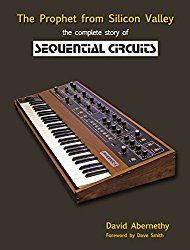
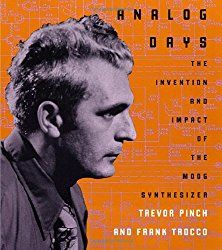
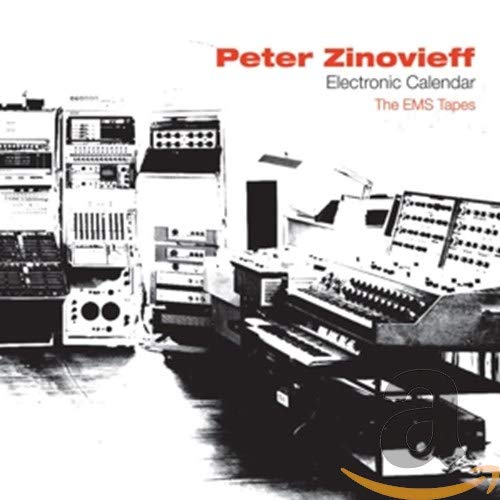
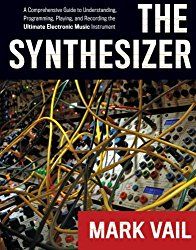
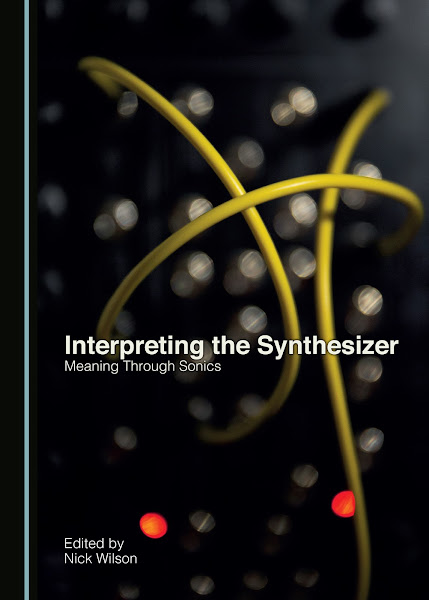
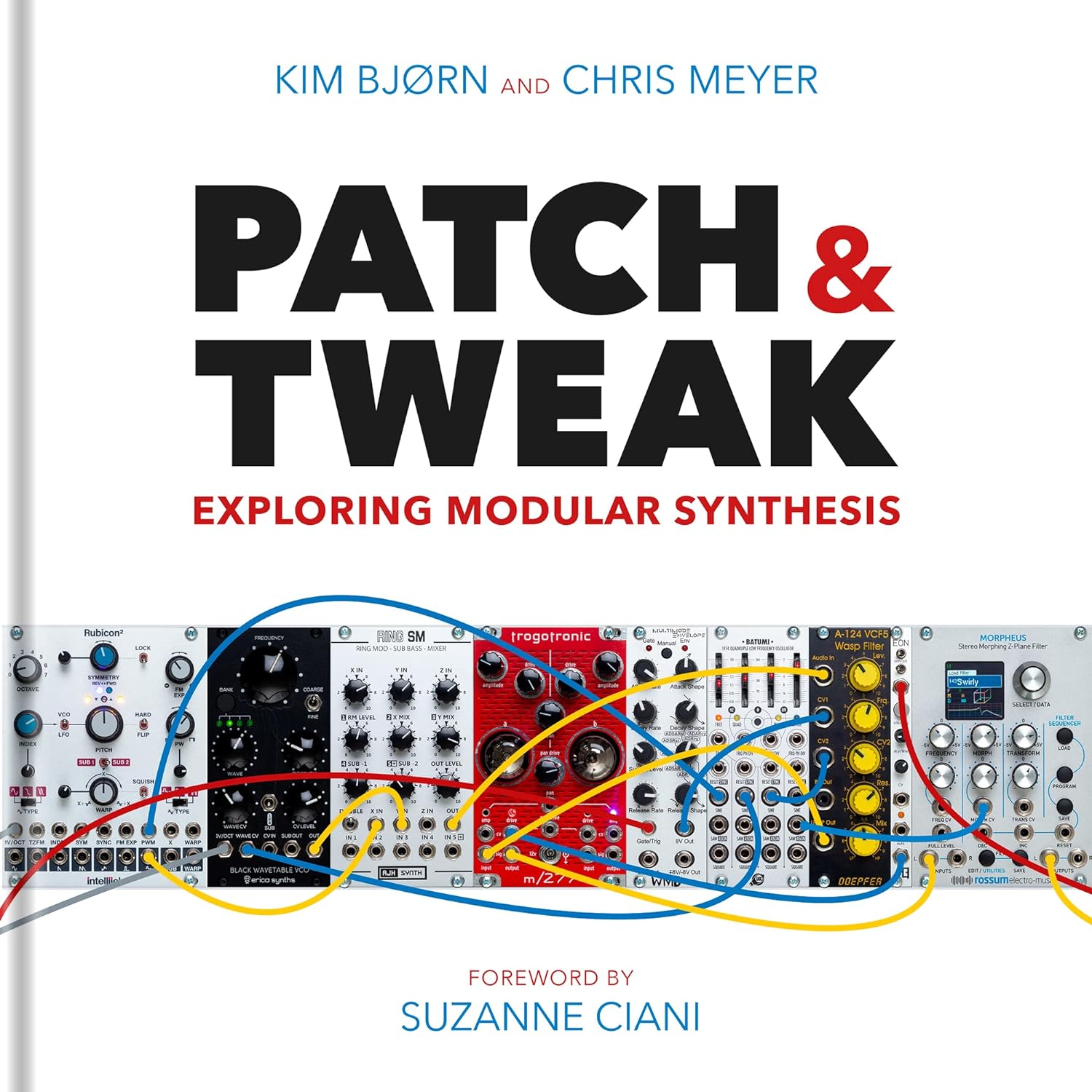
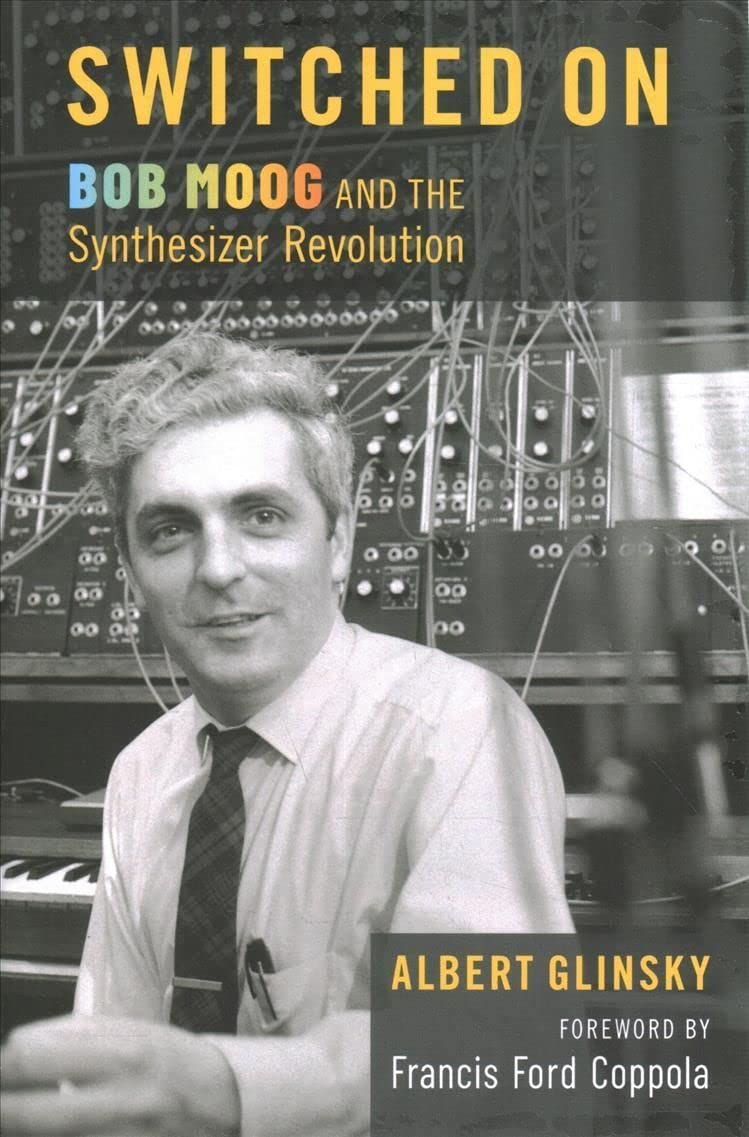
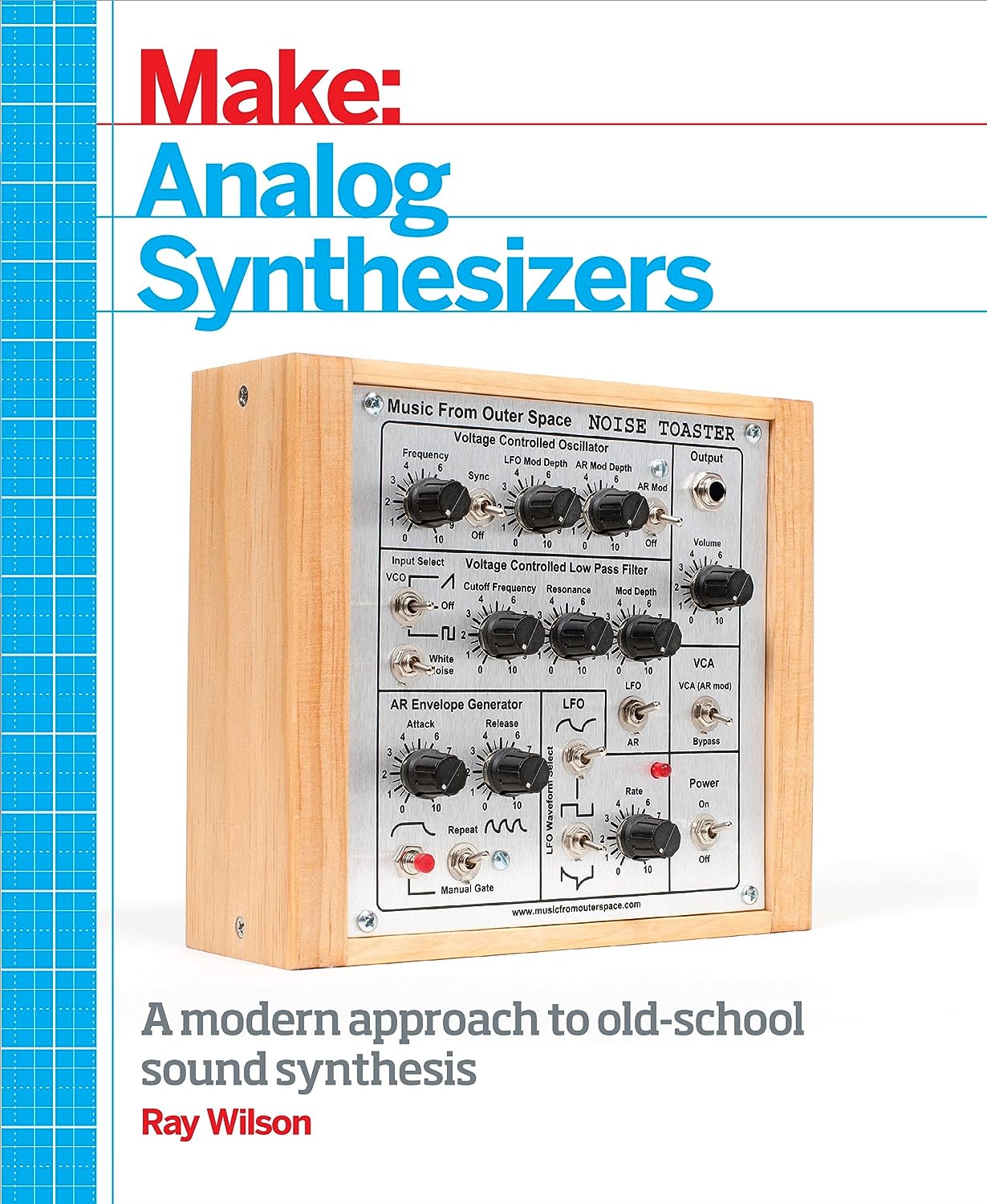
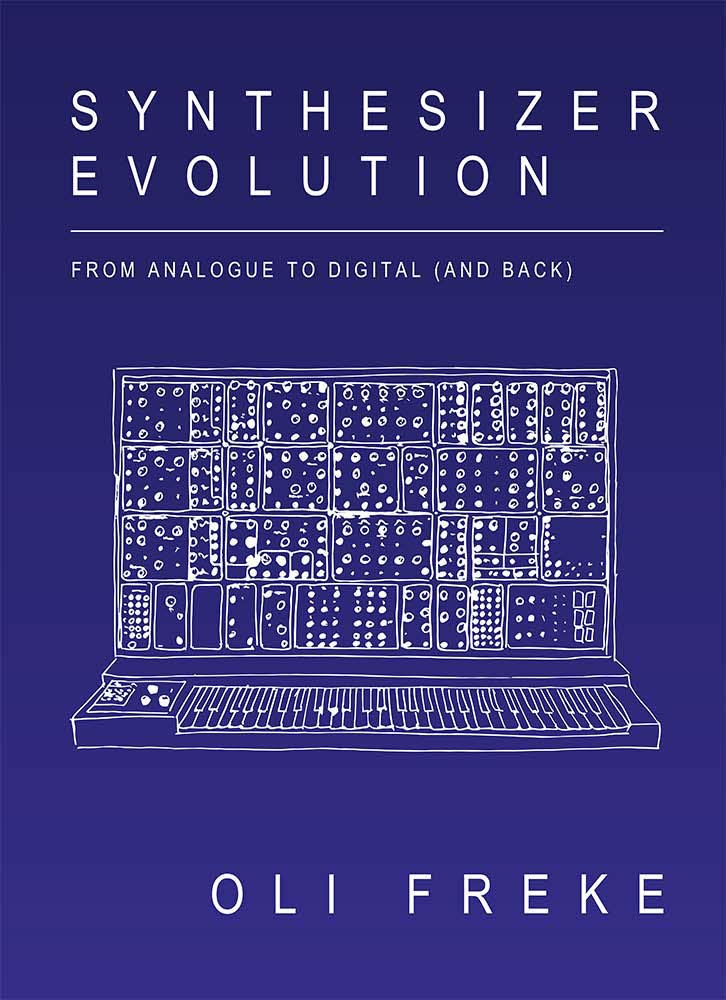
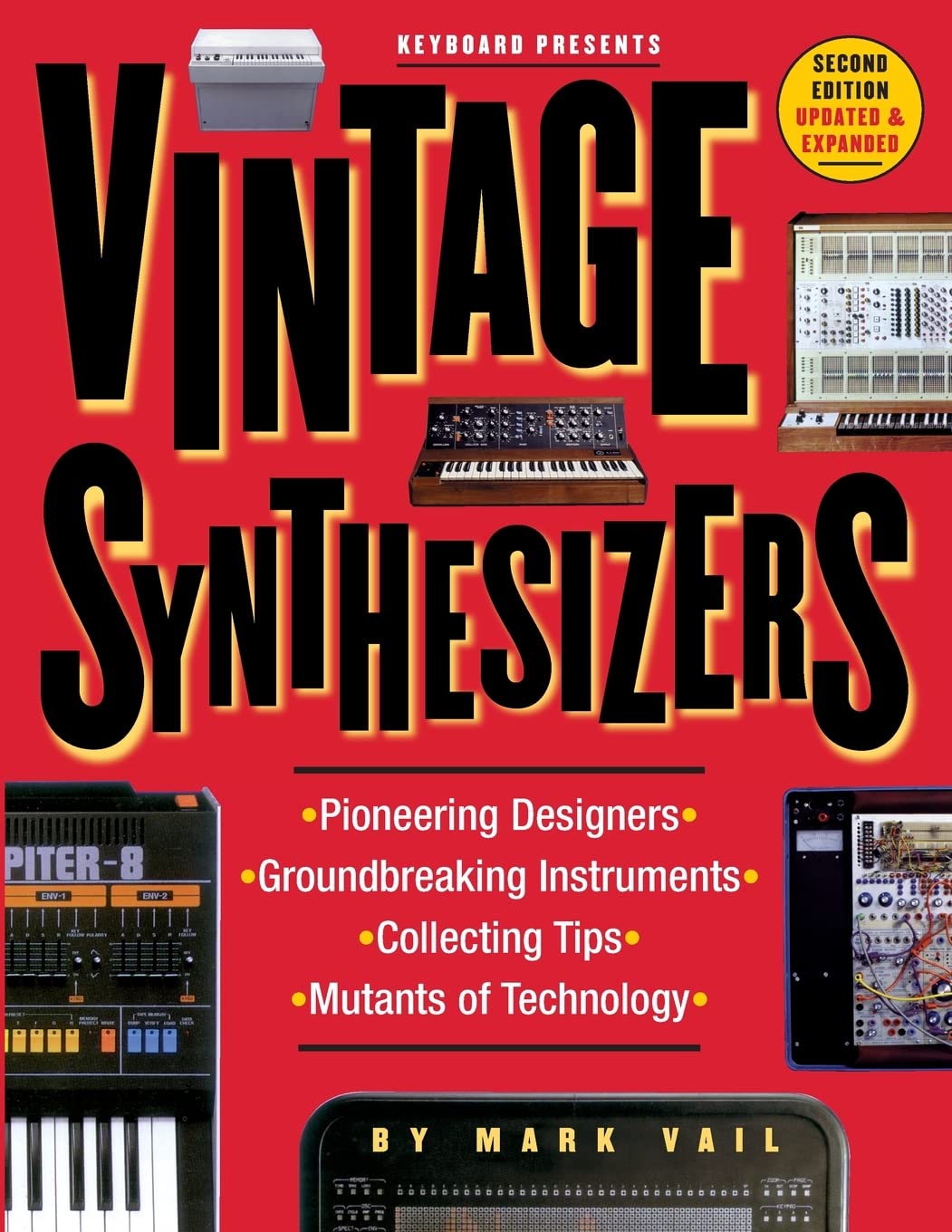
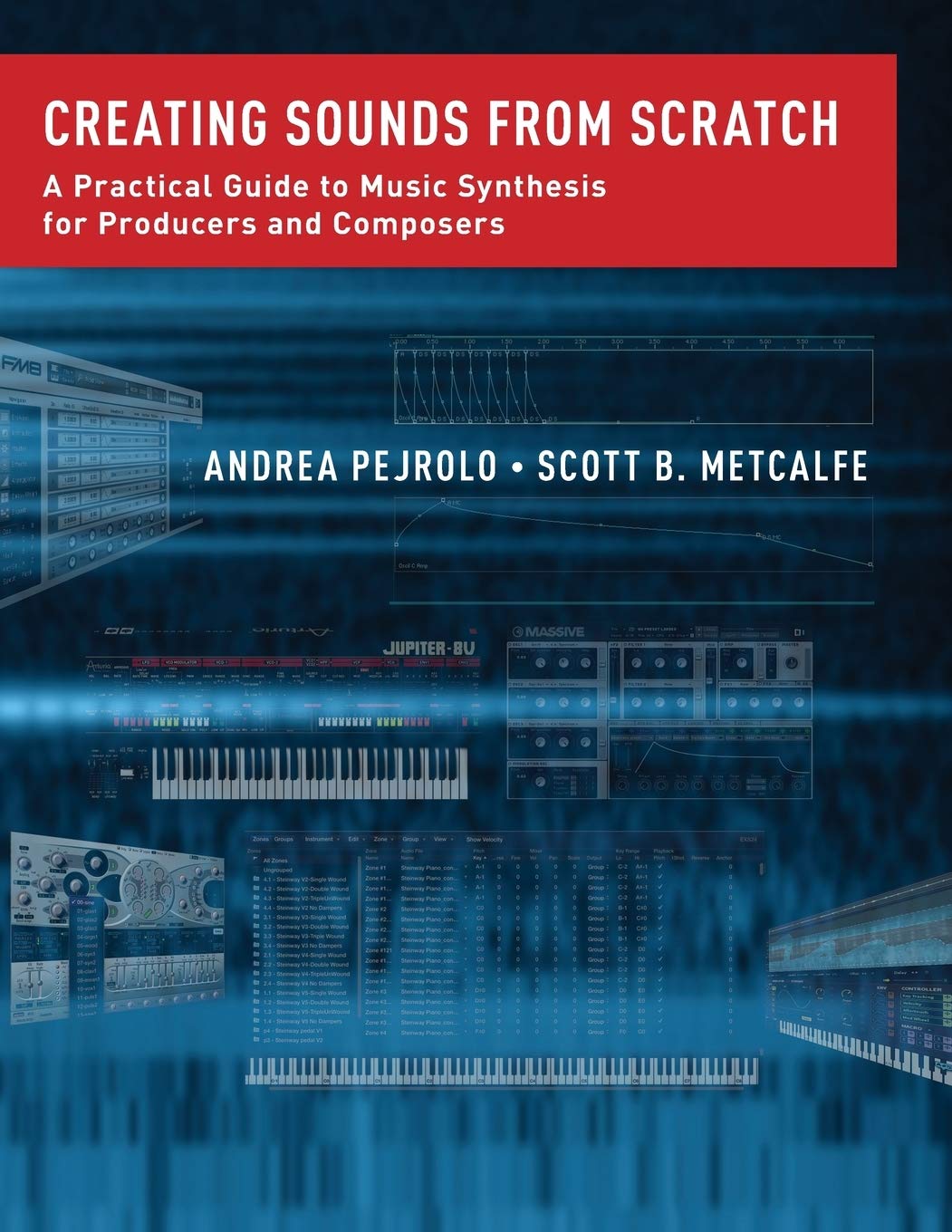
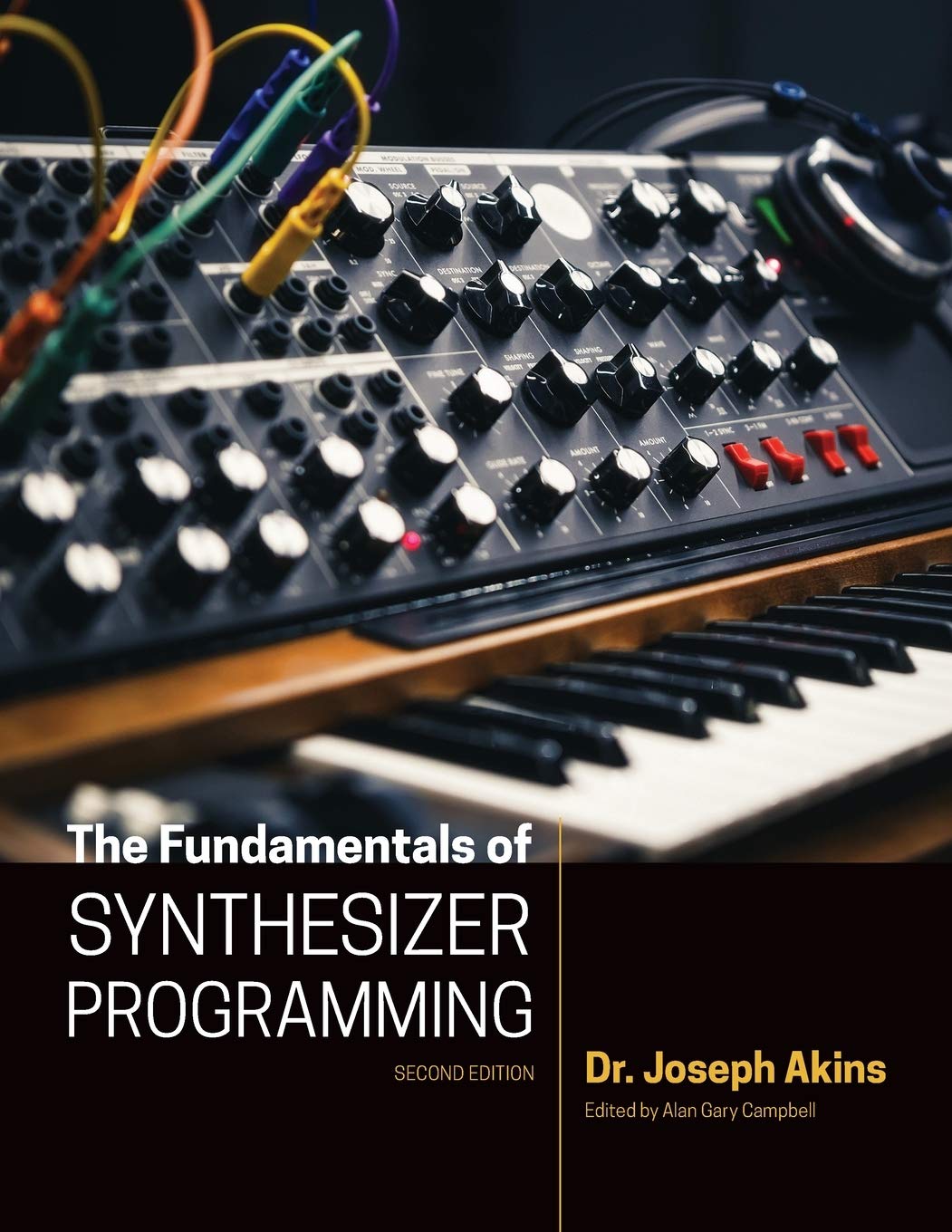
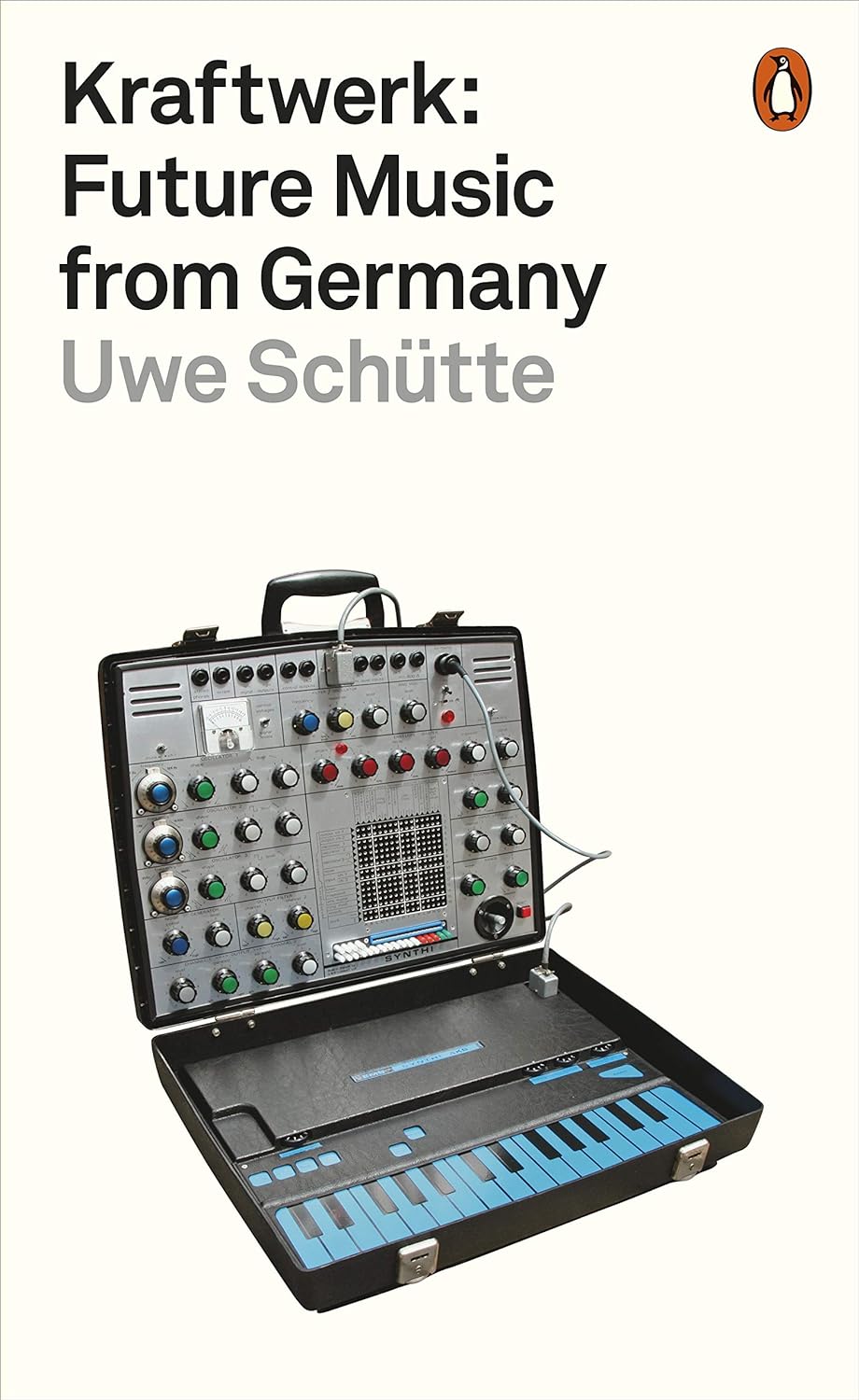
© Matrixsynth - All posts are presented here for informative, historical and educative purposes as applicable within fair use.
MATRIXSYNTH is supported by affiliate links that use cookies to track clickthroughs and sales. See the privacy policy for details.
MATRIXSYNTH - EVERYTHING SYNTH













© Matrixsynth - All posts are presented here for informative, historical and educative purposes as applicable within fair use.
MATRIXSYNTH is supported by affiliate links that use cookies to track clickthroughs and sales. See the privacy policy for details.
MATRIXSYNTH - EVERYTHING SYNTH




























